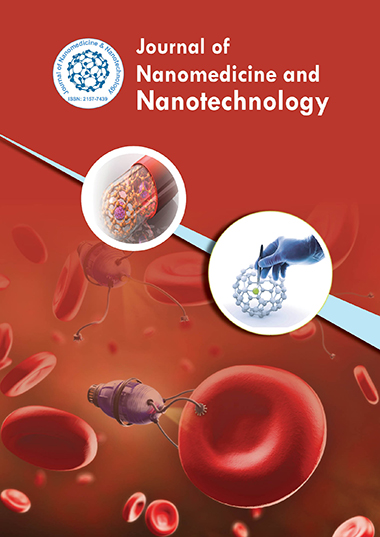索引于
- 打开 J 门
- Genamics 期刊搜索
- 学术钥匙
- 期刊目录
- 研究圣经
- 中国知网(CNKI)
- 西马戈
- 乌尔里希的期刊目录
- 电子期刊图书馆
- 参考搜索
- 哈姆达大学
- 亚利桑那州EBSCO
- OCLC-WorldCat
- SWB 在线目录
- 虚拟生物学图书馆 (vifabio)
- 普布隆斯
- 米亚尔
- 科学索引服务 (SIS)
- 欧洲酒吧
- 谷歌学术
分享此页面
期刊传单

抽象的
Synthesis of Silk Silver Nanoparticles form Silkworm Cocoons and Their Antibacterial Activity on Methicillin Resistant Staphylococcus aureus (MRSA) and Escherichia coli
Harinatha Reddy A and Venkatappa B
In this study, silk protein was used for the synthesis of silver nanoparticles (AgNPs). The freshly prepared silk colloid solution is color less, after 24 h incubation with AgNO3, the color change was observed from colourless to brown colour. The AgNPs were characterized by UV-visible spectrophotometer. The colloid solution of silk showed an absorption peak between 250-280 nm, after 24 h of incubation with AgNO3 the absorbance peak was centered near 420 nm indicating the reduction of silver nitrate into silver nanoparticles by silk protein. Bacterial sensitivity to silver nanoparticles is commonly tested using a well diffusion assay. MRSA and E. coli were isolated from hospital soil samples. S. aureus and E. coli identified by with by microscopic and biochemical tests. MRSA identified in the selected isolates by the Kirby- Bauer disk diffusion test with vancomycin (30 μg), ampicillin (10 μg), oxacillin (1 μg) and cefoxitin (30 μg) antibiotics using Mueller-Hinton agar plates. The diameter of inhibition zone reflects the magnitude of susceptibility of microbes. The strains susceptible to silk silver nanoparticles exhibited larger zone of inhibition, whereas resistant strains exhibit smaller zone of inhibition. According to zone of inhibition Methicillin-resistant Staphylococcus aureus (MRSA) and E. coli exhibited sensitivity towards sericin silver nanoparticles.